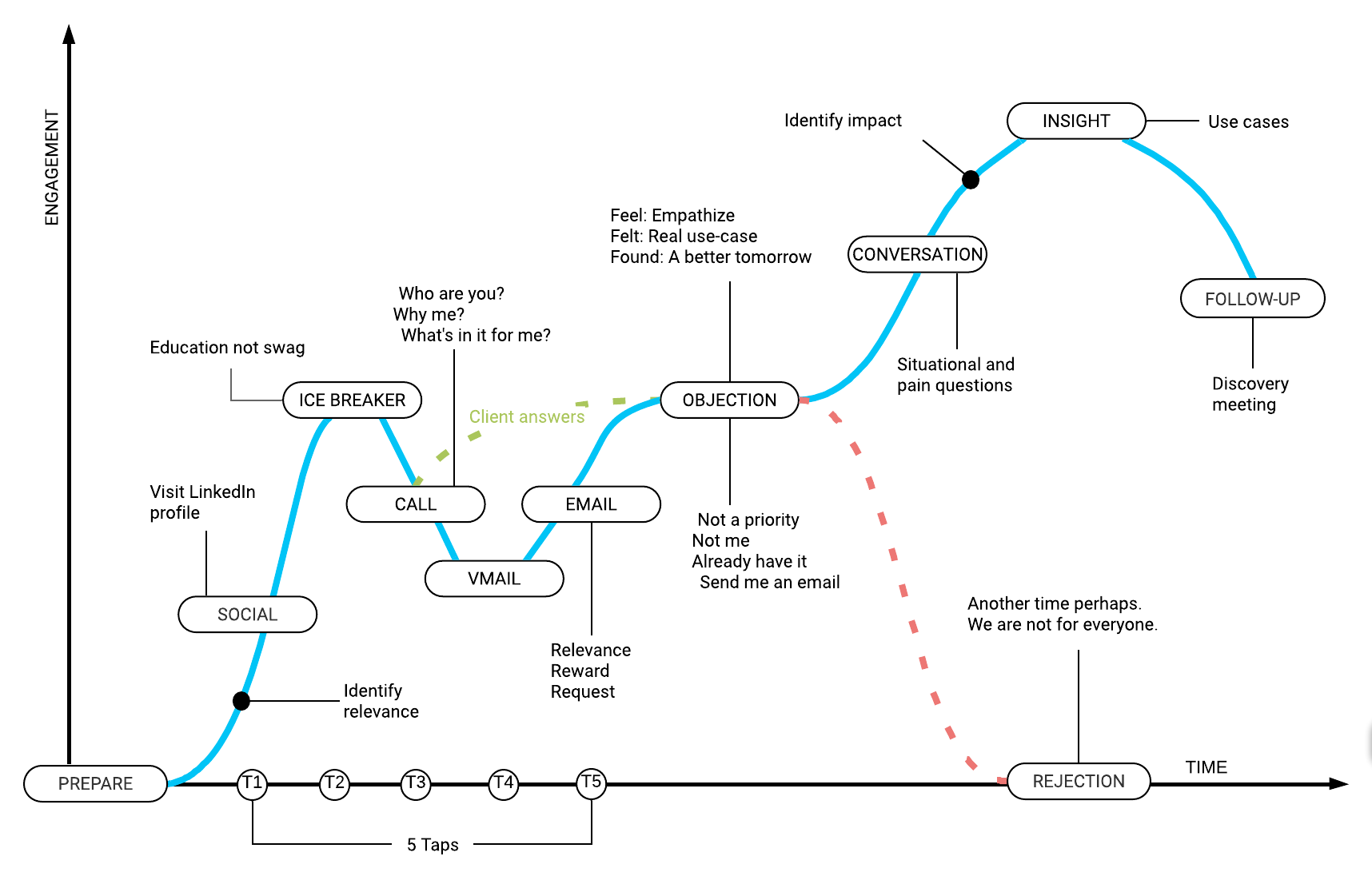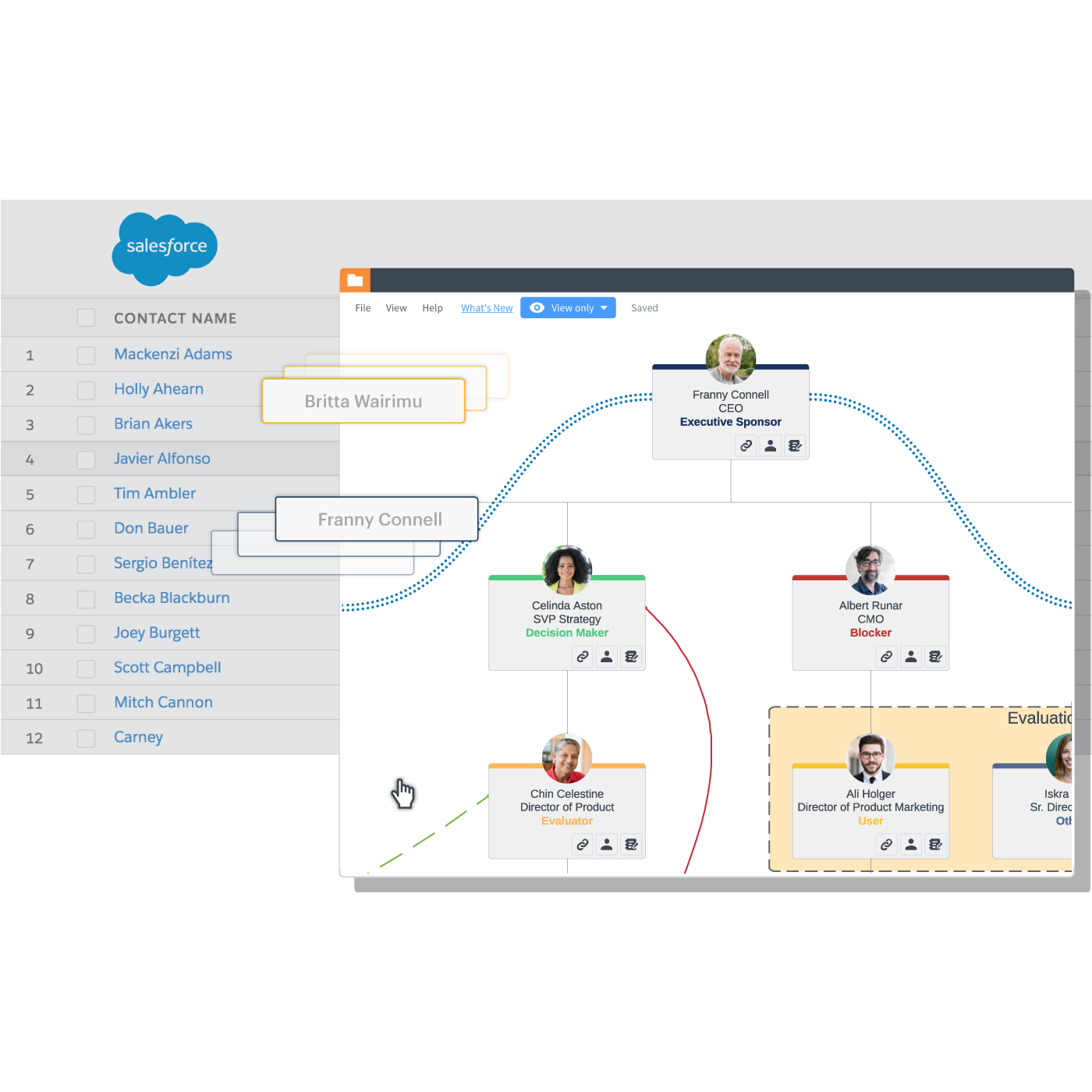
SPIN selling: 3 effective ways to turn your sales around more quickly
Gabe Villamizar
Reading time: about 6 min
Topics:
We’ve all been in the situation when our “sales pitch” doesn’t go exactly as planned. It’s inevitable, and if it hasn’t happened to you yet, it’s just a matter of time. After talking with hundreds of inside sales reps in the past six years, a common reason why this happens is a lack of preparation.
You see, when sales reps don’t do their homework in advance, sales conversations become more of a monologue… and this does enough damage to turn away a would-be customer. Sales reps have to research their buyers, the company, and competitors prior to the first sales call or meeting in order to become relevant and build trust right off the bat.
With that said, in the early stages of a sales deal, what would happen if sales reps deemphasized the focus on themselves (company, product, services, etc), but instead focused primarily on understanding and solving their buyer’s problems first?
Well, this is precisely what the SPIN selling method is designed to do.
There is more to the SPIN sales methodology than meets the eye. Here’s why:
- SPIN selling is the result of 35,000+ sales calls and over 12 years of research.
- Since 1988, it’s been revered for its status as the how-to guide on problem solving.
- SPIN adherents cite its value for shaping them into trusted advisors to customers.
For a greater appreciation of SPIN selling, test one (or all three) of these best practices to your sales repertoire.
Best practice #1: Research your customer before you start
People don’t buy from salespeople because of how well they understood the products being sold, but because of how well they felt the salesperson understood their problems.
Sadly, up to 80% of buyers don’t believe that the salespeople they deal with understand their business. Don’t reinforce this perception: Before you start asking questions, take time to research your customer. With SPIN, good selling starts with good planning.
Learn everything you can (in advance) about your buyer, their company, and their industry. Fortunately, there are many effective research tools at your disposal.
How it's done: First, make sure that your product offering is relevant to the needs of your customers. Tools like Siftery can help determine which products could be a great fit for a company while also revealing which products they’re already using. With Owler, acquisitions, leadership team changes, IPOs, and other events trigger real-time alerts to help you keep tabs on key accounts and provide you with different reasons to connect.
Second, apply that research to create a high-quality sales pipeline. With LinkedIn Sales Navigator, you can choose from over 20 filters to target the types of leads you’re looking for, using filters such as company, job title, job change alerts, industry, company size, and geography.
Amazingly, you don’t even have to be a LinkedIn connection with your customers to get updates via Sales Navigator. Those insights make it easier to find the common ground necessary to craft SPIN questions—long before you reach out to them through InMail or if you’re connected with them via LinkedIn message.
Best practice #2: Start where you think is best for your buyer
So, you’ve invested time researching your customer, gained a better understanding of the company, and recognized the challenges they face within their industry. As part of the SPIN selling process, it only seems logical to start off with the Situation questions.
Given the SPIN acronym, the follow-up questions you’d ask would be Problem, then Implication, closing with Need-Payoff. Or they would… if SPIN were just a checklist.
The purpose of a Situation question is to establish rapport with the customer. But again, if you’ve done your homework, you already understand the buyer’s current situation. If that’s the case, it’s up to you to start SPIN selling where you think is best for your buyer.

How it's done: Each type of question in SPIN is intended to fulfill a crucial function in the sales process—all building towards the Need-Payoff questions which close the deal. Based on your research, you can start at a specific point in the SPIN selling process and then adjust your questions accordingly, based on what your buyers say or how they react.
For example, if your research has already revealed the needs, expectations, and pain points of your customer, exploration through Situation questions may be unnecessary. Go ahead and dive right into the Problem questions to lead customers to your solution.
Skipping a letter in SPIN entirely is always an option. If the customer doesn’t recognize they have a problem that needs solving, then they don’t have a problem. Conversely, if the customer connects the dots early on and is ready to make a purchase, there’s no reason to drag them through each stage. Begin by asking your Need-Payoff questions.
Like SPIN Selling author and creator, Neil Rackham says, “…effective planning takes you more than halfway to effective execution.” In other words, the more you know, the less you ask.
Best practice #3: Create sales coaching scenarios with your team
The SPIN Selling strategy is centered on asking questions… to establish rapport, establish a buyer-centered purpose, and yes, to communicate who you are and why you are there. With the SPIN selling method, asking well-thought questions is means for conversation. Yet, being conversational requires a degree of spontaneity. As counterintuitive as it may seem, the secret to spontaneity is simple: It takes practice, lots of practice. Within the context of SPIN selling, a more accurate piece of advice is “practice makes progress.”
If you’re a sales manager, create a series of applicable and realistic scenarios for your reps to ask SPIN questions. If you’re a rep, roleplay with your sales manager and ask the different SPIN question types so you can improve in the areas you’re not as strong.
How it's done: Share examples of real-world situations of the typical problems faced by customers, allowing reps to cycle through the different questions that comprise SPIN selling. Articulate responses that encourage reps to adapt their question-asking tactics.
When roleplaying as the customer, don’t tell reps upfront about a time where you were bleeding money every week because of an inefficient production process. Make them work to uncover your pain points by asking questions in a compelling way to gain your trust as a customer. Try to conduct these sales coaching sessions on a weekly basis.
For more additional insights on how to talk with customers, check out our exclusive blueprints from Winning by Design.

Hope you feel inspired by these tips as you go big toward your sales goals this next month and quarter, striving to end the year strong! That’s it for now.
Good luck!
-GV

See how Lucidchart strengthens any sales methodology, creating adherence and uniformity across your org.
Learn moreAbout the author

Gabe Villamizar is the Global Evangelist at Lucidchart. He is recognized as a leading social selling and social media practitioner by LinkedIn, Forbes, Forrester, and Salesforce. Gabe's social selling online courses were recently published on Lynda.com and LinkedIn Learning and have been viewed by 70,000+ sales and marketing professionals worldwide. Whenever Gabe isn't tweeting (@gabevillamizar), he's most likely grilling some bomb carne asada tacos in his Traeger Grill. Follow Gabe on Twitter, Instagram, and LinkedIn.
About Lucidchart
Lucidchart, a cloud-based intelligent diagramming application, is a core component of Lucid Software's Visual Collaboration Suite. This intuitive, cloud-based solution empowers teams to collaborate in real-time to build flowcharts, mockups, UML diagrams, customer journey maps, and more. Lucidchart propels teams forward to build the future faster. Lucid is proud to serve top businesses around the world, including customers such as Google, GE, and NBC Universal, and 99% of the Fortune 500. Lucid partners with industry leaders, including Google, Atlassian, and Microsoft. Since its founding, Lucid has received numerous awards for its products, business, and workplace culture. For more information, visit lucidchart.com.
